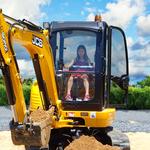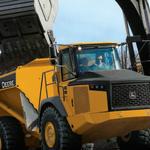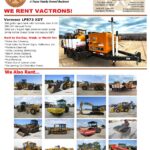Podcast: Play in new window | Download | Embed
Subscribe: Apple Podcasts | RSS
Construction sector is all about heavy equipment and working with technology. You always need to make use of technology to put things straight and get your work done. In case of building high rise, it is quite a challenge for the companies and the challenges come in many ways and many forms. Setting up a tower crane is one such challenge that construction companies experience when they are dealing with tall rises. It also becomes a challenge when they do not have efficient men doing the job or people who do not know how to do it the right way. Let us first understand the utility of a tower crane and why it is so important to have them in a construction site. When you are dealing with tall buildings, it is not possible to carry stuffs like steel, concrete, tool and other building materials to that height by any human. You therefore need the work to be done using a tower crane which has the ability to pick those heavy items right up where it is needed.
Now let us understand what a tower crane is made of. The bottom of the crane is attached to a large concrete pad which is used to give adequate support to the crane. The bottom is then connected to the mast. The mast is the stuff that gives the appropriate height to the crane. Now on the top of the mast, you will find the slewing unit attached to it which helps the crane to rotate. There are many other things attached to the slewing unit such as a boom, the machinery arm and the counterweights. You have a long horizontal jib (projecting arm of a crane) on the top of the slewing unit. This part of the crane carries the load and maneuvers with the help of a trolley that runs along the jib.
We also have a shorter horizontal arm which is used to contain heavy items like large concrete counterweights. The winch motor that plays an instrumental role in lifting the weight lies in the machinery arm. Now we move to something important. In order to erect a tower crane, the crew needs to first assemble a 40-foot mast that contains a slewing gear and 2 vertical mast sections. Once that is done the next thing that needs to be assembled is the jib and the machinery section. The horizontal members and then placed on the assembled mast sections with the help of a mobile crane. Once that is done the counterweights are added. For the crane to grow, it must be done one mast section at a time. A top climber is used by the crew that fits easily between the top of the mast and the slewing unit.
In order to balance the counterweight, the crew has to hang a weight on the jib. Once that is done, the slewing unit is detached from the top of the mast. This results in the hydraulic ramming the top climber and pushes the slewing unit by 20 feet. This gap of 20 foot is then occupied by a 20-foot mast. This is how the height of the crane increases.
Buy Now on eBay [ebayfeedsforwordpress feed=”” items=”2″]





